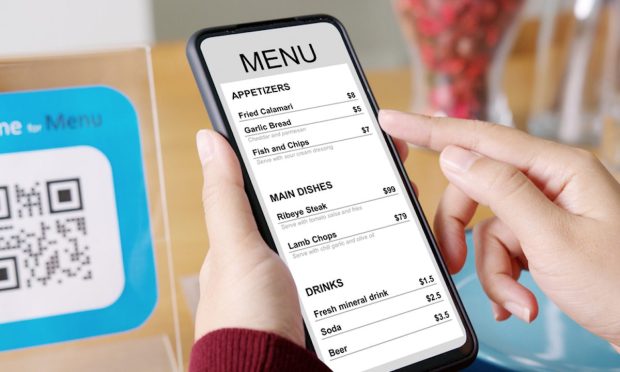Restaurant Brands Can Leverage Digital-Only Items, Personalization to Gain Digital Customers

Over the past couple of years, it has grown increasingly clear that if restaurants want to succeed going forward, they need to be able to compete in the crowded digital marketplace. Accordingly, brands have been pulling out all the stops to incentivize consumers to adopt their digital channels, from promotional messaging to offering freebies to limited-time offers and more.
On Friday (Nov. 5), Colorado-based fast-casual chain Noodles & Company did its part by announcing the debut of a digital-only menu item, a truffle-infused macaroni and cheese, in partnership with consumer-packaged-goods (CPG) brand TRUFF.
“It’s the first time that we’ve done any kind of … digital-only offering, and … it’s going to solidify that we have a strong presence in digital,” Noodles & Company CMO Stacey Pool told PYMNTS in an interview. “I think we should expect to see growth in traffic in our digital platforms in ordering, but the other thing is in the rewards program. People will understand the brand and the benefit of order digitally, and then sign up for the rewards program to make it easier the next time they come back.”
In late October, the company announced that for the third quarter of 2021, digital sales accounted for 51% of all orders, a slight decrease from the previous quarter, in which they made up 56%. Still, the mix remains higher than many competitors.
Sure enough, PYMNTS’ The Bring-It-to-Me Economy: How Online Marketplaces and Aggregators Drive Omnichannel Commerce report, created in collaboration with Carat from Fiserv, featured a survey of more than 5,200 U.S. consumers about their preferences in dining and food shopping and found that 58% of consumers are ordering food online more often than before March 2020.
Read more: Bring-It-to-Me Economy Ascends as Consumers Embrace Home-Centric Lifestyles
Additionally, according to data from the 2021 Restaurant Readiness Index, created in collaboration with Paytronix, 64% of all quick-service restaurant (QSR) orders come from digital channels, including pickup, third-party aggregators, mobile order-ahead and online delivery.
See also: QSRs’ Lagging Loyalty-Reward Investment Hurts Innovation and Sales
Hitting Turbulence
After months of generally positive interest from investors, Noodles & Company hit a more challenging period in recent weeks. Pool argues that people are missing the chain’s strong sales and its intentions to hit unit growth of 8% next year. “Even in light of some of the staffing challenges we have, the core part of our business has remained stable and growing,” she said.
In its most recent quarter, the company reported record-high average unit volumes (AUV), about 16% over both 2020 and pre-pandemic volume.
This growth significantly outperforms the industry as a whole. According to data from the NPD group, overall digital and physical visits to restaurants in September 2021 were down 6% from September 2019.
Digital Meets Physical
Across the restaurant industry, third-quarter results suggest brands that integrate digital technologies into their physical locations have the advantage when it comes to presenting consumers with an appealing, lower-friction, on-site commerce journey.
Index findings also suggest that a small but significant share of restaurant customers have come to expect these integrations. Twenty-one percent of consumers reported that they believe that the ability to pay with digital wallets will be important to restaurants’ future success. Nineteen percent of respondents said the same of in-restaurant self-service kiosks, and 10% said the same of QR codes enhancing end-to-end experiences.
You may also like: Restaurants’ Financial Results Reveal In-Store Technologies Separate Top Performers from the Rest
Noodles & Company is looking toward similar integrations, so that consumers can have connected experiences both online and in stores.
“We’re exploring things around digital signage and quick ways to order,” Pool said. “We think it’s very important to be able to sign up very quickly to our rewards program … Longer term, we’re going to leverage our guests’ data to personalize the experience in the restaurant.”
Meeting the Customer Where They Are
To the latter point, one of the restaurant’s digital priorities over the next year is to leverage its customer relationship management (CRM) tools to offer more relevant messaging.
These kinds of individualized upgrades can be key — findings from the July-August edition of PYMNTS’ Delivering on Restaurant Rewards report, created in collaboration with Paytronix, indicated that 72% of QSR customers consider the availability of customized coupons or discounts when deciding whether to sign up for loyalty programs.
With the vast majority of large brands now offering consumers the chance to earn rewards for their spending, effective personalization can be the differentiator that helps a restaurant stand out amid the noise.
Related news: Two-Thirds of Consumers Find Restaurant Rewards Impersonal
“We’re very focused on our marketing technology, and our CRM systems are critical to us,” said Pool. “What’s most important to us right now is being really smart about how we go to market, being very relevant to our guests in terms of where they engage with us, and also making sure we’re putting the right offers and the right dishes in front of them through personalization.”
